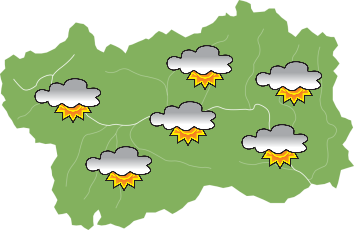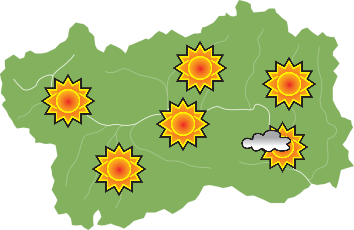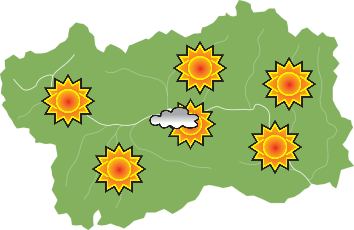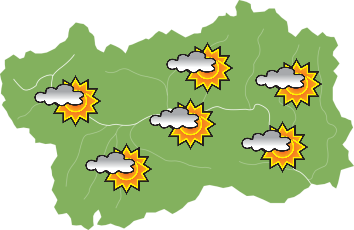Cryptoporticus
Resort: Aosta
- October to March:
daily from 10 a.m. to 1 p.m. and 2 p.m. to 5 p.m. - April to September:
daily from 9 a.m. to 7 p.m.
Last entry 30 minutes before closing time.
Closed on December 25th and January 1st.
Opening times are subject to variations: we advice to verify them by contacting the phone number reported in the “Contact” area.
the single ticket for the monuments costs €5.00
Reduced 19 - 25 years: € 3.00
Combination ticket “Aosta Archeologica, valid for six months from the date of issue, allowing one entry in each of the following sites:
- Forensic cryptoporticus
- Early Christian Basilica of San Lorenzo
- Regional Archaeological Museum
Free:
- children and teenagers under 18 years
- visitors with disabilities and their companions
- teachers and other persons accompanying school groups
- on line reservation and purchase of the tickets are strongly advised on MiDA
Access: from piazza Giovanni XXIII, on the Cathedral’s left hand side.
People with disabilities: not accessible.
Photos and videos: it is possible to take pictures and videos, for private use and not for gain, with any device without flash and support. Shooting with selfie stick is forbidden. Using shots and films for advertising, press or commercial purposes is allowed only upon authorization.
Pets: small animals are admitted inside the monument only if held in one’s arms or transported in a pet carrier.
Contact
Site included in the Aosta archeologica cumulative ticket
This monument, which dates back to the Augustan era, is the subject of much debate; its main purpose was to create a structure for containing and levelling the ground that must have been slightly sloping from north to south in that part of the town, creating a difference of level between the holy area and the adjacent forensic plateau. Beside this secure structural function, the hypothesis was later put forward that the semi-buried part could have been used as a warehouse and military storage area (horreum). However, following the latest research, it emerges that this use should radically be excluded due to the structural aspect of the monument, its particular location or as a result of a comparison with other similar examples. The marble colonnade (porticus triplex) that stood over it (now destroyed, and of which no archaeological evidence remains in situ) acted as a scenic frame for the two original twin temples of the holy terrace.
Here we find ourselves in the northern part of the Roman Forum complex, right in front of the Cathedral entrance, corresponding to a raised holy area, which was in turn separated from the one used for civil and trade purposes (piazza Severino Caveri), thanks a small decuman passage, which roughly corresponds to the current Via Mons. De Sales.
In technical and mapping terms, the Aosta cryptoporticus is divided into three parts with a horseshoe layout and internally split into two barrel vaults with a central sequence of lowered arches. The length of the two sides is 71.80 m, while the central section extends further, with an internal length of 87.10 m.
Originally, two monumental passages would have opened onto ends of the side wings with openings onto the sides of the central staircase.
The galleries are lit by a series of splayed windows that allow an adequate air flow; over the course of the year, the internal temperature of the cryptoporticus remains constant.
When compared with all these cases, old and new, Italic and rural, which archaeological research has always defined as examples of the public and specifically forensic cryptoporticus, the Aosta example could also be interpreted as a noble structure, linked to the imperial cult and the self-celebration of local nobility, religious bodies or professional citizens.
It is therefore fair to suppose that the cryptoporticus can be interpreted as areas with a specific political-liturgical function: a sort of midpoint connecting the holy (the holy area and the relative temple buildings) and the profane (the public square).
As some medieval maps appear to document, the Cryptoporticus structures were still used in the following centuries, when they were transformed into cellars and became widely referred to as the “Marché des Romains”.










